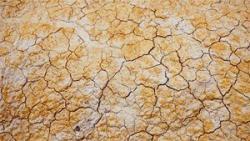Dry Heat vs Autoclaves
Sterilization is essential in the lab animal science industry. Animal cages, tools, surfaces, and lab equipment require thorough sterilization to prevent the transfer of harmful microorganisms and pathogens which can have devastating consequences for the lab animals and the studies being performed. Animal science lab technicians have traditionally used steam autoclaves to clean and sterilize their tools and equipment, but a growing number are switching to dry heat sterilization methods.
Autoclaves and dry heat sterilization are both used in the lab animal science industry to sterilize animal cages to keep lab animals healthy. There are a number of differences between dry heat sterilization and steam sterilization, the most obvious difference being that autoclaves use steam, vacuum, and pressure to clean tools and cages, while dry heat sterilization simply uses hot air. The elimination of steam and the vacuum atmosphere results in a number of benefits to the dry heat sterilization method.
Advantages of Dry Heat over Autoclaves
Sustainable Technology
The use of water in steam autoclaves can have a deleterious effect on the environment. Installing and maintaining water lines can also be time-consuming and expensive, and the presence of water lines can reduce the overall space used in the sterilization procedures. Dry heat sterilization, in comparison, does not use water making it more eco-friendly than traditional autoclaves.
Ease of Maintenance
Since a dry heat sterilization system requires only one utility, electricity, and there is no pit, steam, or water requirements, it is easier to maintain than a steam system. The dry heat technology is less intensive than the autoclave technology resulting in less time on maintenance on items such as piping, seals, and gauges.
Cost Effective
The cost of a dry heat sterilization system is substantially less to install and operate than a steam autoclave. A dry heat sterilizer does not require a drain, pit, steam line, condensation line, and steam capture hoods. A dry heat system also requires less maintenance over time which saves on repair costs. Lastly, dry heat does not harm plastic cages, keeping cages in use longer which reduces operating costs.
Ease of Installation
Dry heat sterilizers are designed with panelized or modular sections for on-site assembly, which keeps construction costs to a minimum. These sections also fit through most doorways and passageways in research facilities which eliminate the need for rigging and construction equipment to gain access to the installation location.
Increased Load Capacity
Compact load configuration in a dry heat sterilizer results in a higher number of cages processed per sterilization cycle. Focused forced air convection technology is also decreasing dry heat cycle time. Today, the typical cycle can last less than two hours, depending on the load configuration and cool down requirements.
The Future of Dry Heat Sterilization
Dry heat sterilization technologies continue to advance. Innovations such as advanced operator controls and optimized production processes will continue to increase productivity, improve sterilization, and provide greater returns on investment.
Gruenberg is the leader in dry heat sterilization technology providing the lab animal science industry with efficient, effective, and sustainable sterilization solutions. The Gruenberg Steri-Dry™ line of dry heat sterilizers are available in a variety of sizes, configurations, and temperature ranges. For more information on the Gruenberg Steri-Dry™ line visit our website, https://www.gruenberg.com or connect with us on Facebook or LinkedIn.




